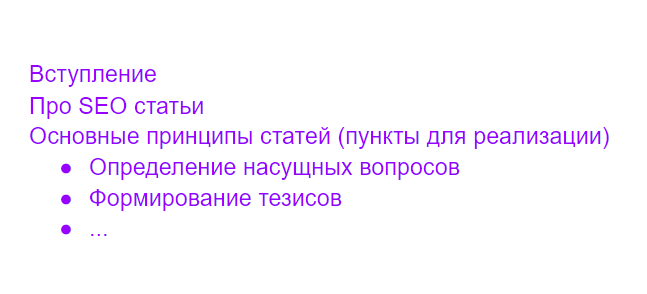Blog articles affecting website promotion
When developing a blog, many are engaged in link building, advertising their blog on social networks, and the formation of a behavioral factor that affects the increase in articles in search results. But the question is how to make blog articles that will work independently, bringing more and more customers to your site every day.
All of the above methods are suitable for blog development, but without basic work, all attempts to attract customers in this way will be in vain.

What is an SEO article for a blog
When optimizing a site, information is often heard that you need to write blog articles, thereby attracting new users to the site. When writing such articles for a blog, you can reach a large audience.
A common mistake is the senseless filling of articles with key queries and expecting a miracle, they say such articles will grow by themselves and become useful for the search engine and users. Big delusion. The correct SEO article for a blog, in addition to the content of key user queries and their correct use in the text, must also fulfill other requirements for SEO texts.
Regardless of whether the site owner, optimizer or marketer of the company, this material will be useful in forming the task of writing content and controlling the final result of the articles.

The basic principles of writing SEO texts for the site
The first step when writing blog articles
Determine the end user who should interact with the article. For example, for an online store selling shoes, a topical blog would be writing feature articles on the topic of shoes. It is important to cover the maximum range of problems and questions arising from buyers when choosing products.
Such questions can be identified in several ways:
- Collect a semantic core for each article, with subsequent addition to the text.
- Ask people interacting with customers the most pressing questions.
- Analyze the thematic blogs of competitors and identify articles of interest for your site.
In such ways, when writing SEO texts, identify the main pressing questions of users and understand what the article should be about. Each article for the blog should reveal the "pain" of users with a subsequent solution.
For example:
Due to the prevention of work with hot water, in many cities water is turned off for weeks or even months.
It would be a mistake to write an article about the quality of boilers and their advantages.
The correct solution would be a blog article related to the problem and an offer of alternative sources of hot water.
In this way, you can attract not only a user who may be interested in the product, but also solve his urgent "headache".
The second stage of writing SEO texts
A copywriter is given the opportunity to write to blog at his own discretion, and as a result, "own discretion" very often turns out to be erroneous. The number of edits that are eventually made on the written articles is large, errors, lack of structure and other problems.
If you, as an esthete, are used to seeing the quality of high-quality articles on your blog, then it's best to immediately draw up a plan for a future article for a copywriter or ask to show it before writing.Receiving the detailed content of an SEO article, you will see what it is about, what problems it solves, what will be in each block. Each written text should be based on a topic that needs to be covered.
By compiling abstract notes when writing an article, we will get a clear understanding of what headings, what questions and topics the blog article will reveal.

When forming the structure, it is better to use a formula according to which the article will be interesting to the user and help solve his problem, with subsequent benefits for you: 1. Attractive title for SEO text, title that will attract the user to come and read the article. Preferably in the title of the article for the blog was the most important keyword, the purpose of the article.

2. Write SEO articles using key queries, it is best to be as rich as possible so that the article is useful and at the same time has a common goal. Key queries in the blog text should be entered harmoniously and should not create problems with understanding and "hitches" when reading.
3. Compliance with the technical specifications for the correct writing of SEO text:
- 100% Uniqueness. The parameter indicates the uniqueness of our blog text, compared to other articles on this topic. The indicator should not be lower than 90%, otherwise the search engine will consider such text as partially borrowed and the usefulness has already been described on other resources.
- Word-density (Spaminess). A written SEO article should contain a goal, usually the most used words in the article are its goal. But the indicator of the word should not exceed 3% of the entire text.
- There should be a division into headings in the text based on our structure.
4. The usefulness of the site's blog articles. A subjective factor, but it is also necessary to think about it when writing articles, the search engine, although it is a machine, understands the content of each page and can evaluate the usefulness of each document. What to look for:
- Usefulness of the text. When writing SEO articles, it is important to write a minimum of "water" and a maximum of useful information that specifically reveals the purpose of the article.
- Truthfulness. All written information must be up-to-date and not contain lies and not confuse users. Your article is not the only source, which means that the comparison will show distorted information.
- Resourcefulness. You can use not only established information for SEO text, but new information that can help users.
- Expertise. The article should be written in such a way that the reader can see the knowledge of the author in this area. Use validated static data, schemas, tables. Such uses should be moderate for the readability of the text.
- Simple text. Write SEO blog articles in simple sentences, without a lot of complex sentences or frequent use of specialized terms and concepts.
- Volume. Paragraphs are best divided into blocks of 1000 characters or separated by statistical data, pictures. This increases readability and reading does not turn into a routine.
- The volume of the article. The volume of a blog article directly depends on the purpose and the issues being disclosed, the search engine accepts from 2-4 thousand characters without spaces. But to write a quality article, most often you need to go beyond these limits. When writing SEO text in this way, it is better to adhere to all of the above characteristics in terms of filling with key queries and word density.
5. The most significant articles that we remember were written in such a way that they were kept in the reader's memory. The person who will write the article should use turns, comparisons and metaphors that will create a vivid impression on the reader.

The fourth stage, the correctness of the narration of the article
There are a lot of articles on the Internet that leave the user halfway. Do not actually end with targeted answers or conclusions. There is a misunderstanding of reading the SEO article, doubt creeps in in relation to the entire resource.
It is important to write a narrative and satisfy the reader's interest. To answer the questions of interest to users, which were revealed at the very beginning of the articles. Summarizing all the important information, summarize, point out the most important points and that all the main questions asked in the blog article are disclosed.
What next and how to write blog articles?
Having analyzed all aspects of writing an article, you can notice that their presence in any text leads to the correctness of writing, disclosure of the purpose and questions of the article. The user, like the search engine, wants to spend time only on those things that are worthy of his attention.
A well-written blog article may interest the user to visit the site and read new topics, new questions. Constantly return and trust the resource. And "garbage" resources that provide introductory information without a final and interesting facts are left behind.

















